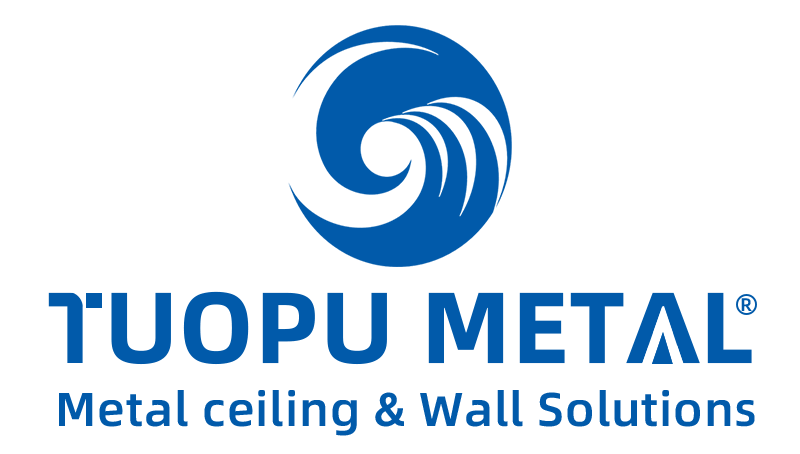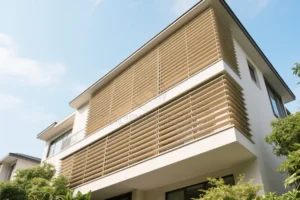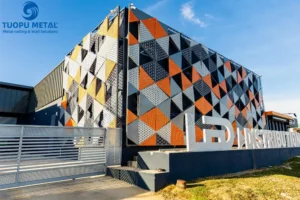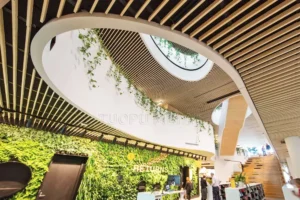Aluminum panels are rather becoming important in architecture and building today because of their diversity, eco-friendliness, and stylish looks. Of all the variants ready-made, perforated aluminum panels and mesh aluminum panels are distinguished by their peculiarities. Go on to see how there two-panel types are different from each other in detail.
Understanding Perforated Aluminum Panels
Perforated aluminum panels consist of plain sheets of aluminum with holes punched out in ornamental patterns.
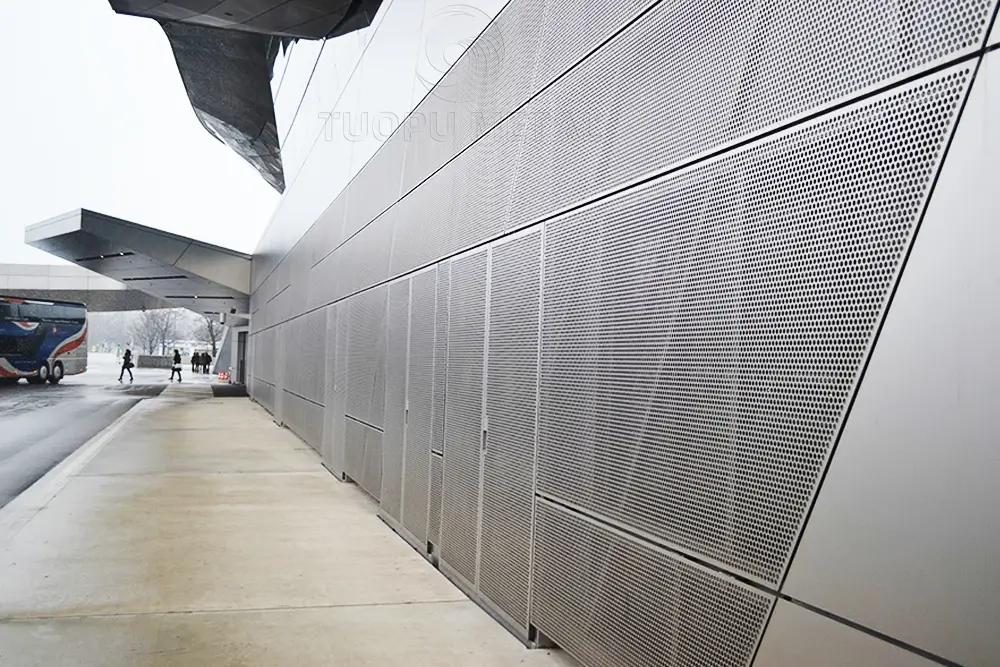
Features
Excellent Noise Absorbing Quality:
These panels can be made to absorb noise to a great extent by the design of the styles of perforations. This will be beneficial in construction sites, airports, and buildings with commercial usefulness in regards to controlling sound, especially in areas with a lot of activities.
Environmental Control:
The unique use of perforated aluminum panels can control levels of light and air. Perforation density and patterns can be designed by architects to maximize daylight exposure without compromising privacy or shading.
Additionally, perforated panels are designed to be used in the facade systems so it could assist in regulating air movement along with maintaining its structural strength, this on one hand eliminates the requirement of any other ventilation system henceforth bringing down other additional costs.
Aesthetic Versatility:
Because these perforated panels feature aluminum construction, they can boast unique designs yet still withstand the tests of time. There are perforated aluminum panels with holes where, depending on the orientation of the building (north or south), they allow to design of brise soleil that can attenuate sunlight and become a material interesting enough for games with shadow through its holes. Few other building materials offer this level of creative freedom, and that is precisely why aluminum has become the first choice for architects who seek to push boundaries.
Applications
Punctured aluminum panels are frequently utilized in diverse architectural applications, ranging from building exteriors and sunshades to ceilings and dividers. They can also function as sound barriers along roadways or as visually appealing cladding for parking structures and overpasses. Their lightweight nature renders them ideal for extensive installations where weight limitations are a factor.
Perforated aluminum panel is commonly found in interior spaces for soundproofing panels and accent walls, suitable for expansive areas like auditoriums or conference centers.

Types Of Perforated Aluminum Panels
Round hole panels are common for their balanced aesthetics and sound absorption.
Square hole panels offer a sleek, modern look.
Slotted panels provide superior airflow and sound control.
Custom perforations can be tailored for unique design or functional purposes, making them ideal for specialized architectural needs.

Understanding Mesh Aluminum Panel
These panels, made by weaving or expanding aluminum into grid-like structures, are gaining traction in architectural circles due to their robust physical properties and ability to facilitate unique design solutions.

Features
Open Structure: Perforated aluminum panels are also full of holes (drilled, punched, or otherwise made), thus to some extent delivering similar traits but it may not ensure free flow ventilation as that of mesh aluminum.
Easier to install: Since they are so much lighter than perforated panels, they are easier to transport and install. This can help while doing an installation to avoid changing some of the system later.
Aesthetics: It looks very industrial and somewhat minimalistic with its open design. This makes them highly used in modern architectural designs.
Applications
High transparent and sustainable mesh from aluminum is often used as a safety mesh for the usage in- fence, Construction covering panels, or protective covers. Nevertheless, they indeed prove greater aesthetic potential. In urban design, mesh aluminum is often used for projects where merging with the environment or reducing a visual load is important. For instance, mesh aluminum panels can provide an elegant sunshade upon facades so that sunlight may be filtered and retain a calm openness in air space.
Mesh aluminum Interior applications include decorative partitions that provide privacy while maintaining light flow These partitions are perfect for common large open spaces such as lobbies, galleries, or commercial areas, where is necessary to provide different levels of privacy and manage the control over light.
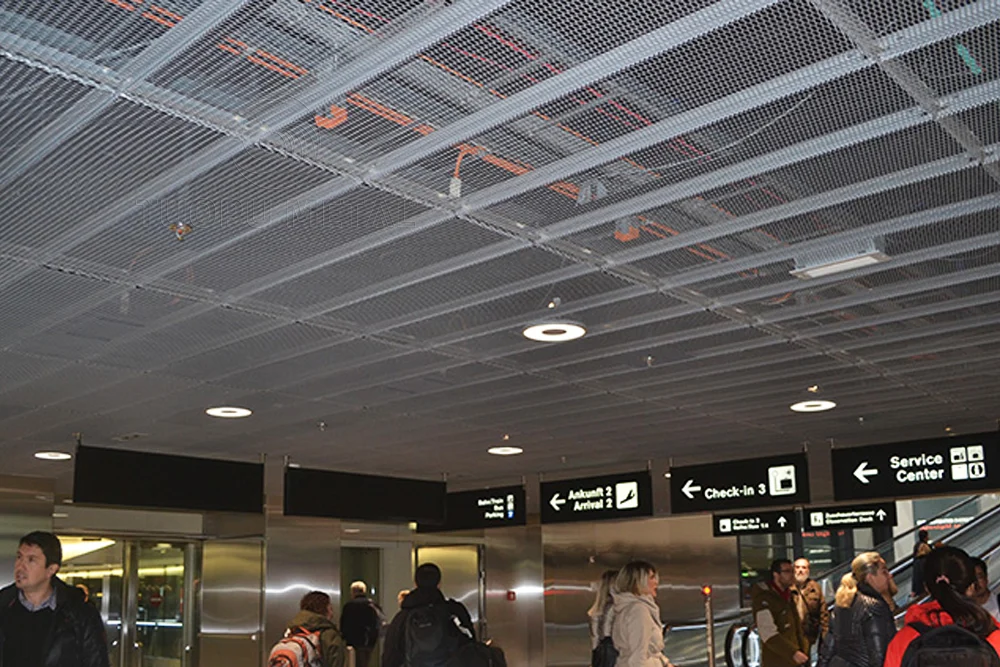
Factors to Consider When Choosing Between Perforated and Mesh Aluminum Panels
Sound Absorption:
Perforated Aluminum Panel: Better at absorbing sound due to its ability to diffuse sound waves through the perforations. Often used for noise control in public or commercial spaces.
Mesh Aluminum Panel: Less effective at sound absorption due to the open, grid-like structure, which allows sound to pass through with minimal obstruction.
Air Circulation:
Perforated Aluminum Panel: Provides some airflow but is more suited for shading and light control, with limited ventilation properties.
Mesh Aluminum Panel: Superior air circulation due to its open weave design, making it ideal for spaces requiring high ventilation.
Weight:
Perforated Aluminum Panel: Generally heavier due to solid metal structure with perforations.
Mesh Aluminum Panel: Lighter because of the open mesh design, offering a more lightweight solution without compromising strength.
Aesthetic Options:
Whole patterns are used for such a panel type to give all types of design and artwork on the post.
Mesh Aluminum Panel — gives a more industrial or minimalist look but lacks customizability compared to perforated panels.
Durability:
Perforated Aluminum Panel: Durable, but can become dirty due to the holes in its design and may need frequent cleaning.
Mesh Aluminum Panel: Higher resistance in severe environments, resistance to debris accumulation, and more low maintenance.
Customization and Tailoring for Your Project
One of the many undervalued benefits of both perforated and mesh aluminum panels is the capability for customization, which can take your project above and beyond simply using standard building material options. Though many professionals often consider the physical properties of these materials like durability, strength, or design appeal as primary features, customization can be that crucial element that shapes how those panels come to life in your architectural imagination.
That level of customization extends far beyond simply changing hole size or density to create a material that acts in concert with the building, the climate, and even the people themselves. One example is that perforated aluminum panels can be made in very precise patterns to manage the daylight levels in a space, providing specific shading solutions for different hours of the day or season. This is a crucial component for projects targeting energy-efficient solutions; blocking sunlight while allowing natural light to shine through can help reduce the need for artificial lighting and cooling systems, leading to reduced overall consumption of energy.
Contrary to the said, for example, mesh aluminum panels can offer more customized aesthetic and transparency options, as well as solutions that are better suited to specific environments from a performance standpoint. Tailored mesh patterns can improve wind resistance or increase the level of privacy without compromising airflow. Furthermore, mesh panels can be designed to create intricate, dynamic shadow effects on building facades, offering unique visual elements that interact with changing light conditions.
Ultimately, customization in both perforated and mesh aluminum panels allows architects and designers to push the boundaries of innovation, ensuring that materials do more than meet the eye—they become integral to the building’s identity and efficiency.
Conclusion
When deciding between perforated panels and mesh panels, you should consider what you need most. Need superior sound absorption? Perforated panels are the way to go. Looking for better air circulation? Mesh panels are likely your best bet.
For more insights and expert advice, visit Tuopu Metal. Our website offers professional guides, practical tips, and a rich selection of products to help you find the perfect solution for your project.
Understanding the unique properties of perforated and mesh aluminum panels ensures you’ll make the best choice for your space, whether it’s acoustic control or improved ventilation.
